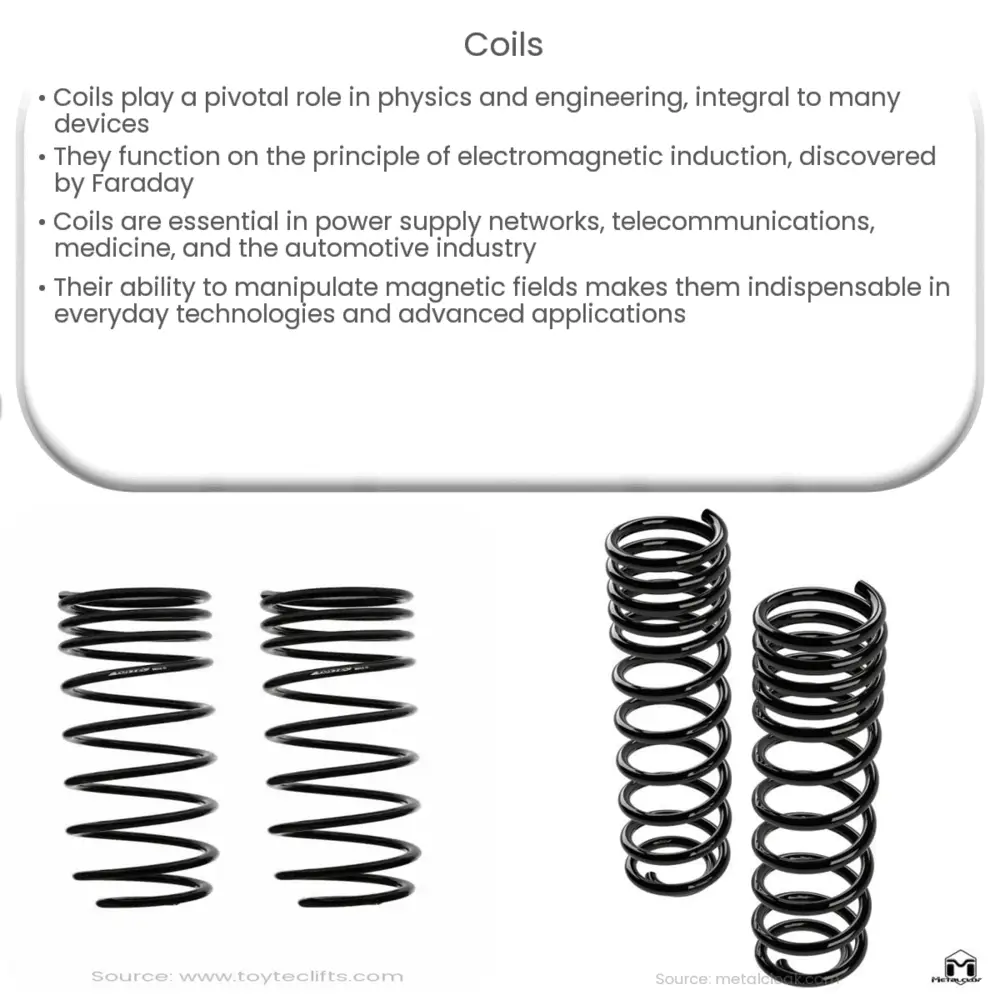Explore the diverse roles of coils in everyday devices, from power supply networks to medical technology, in this comprehensive guide.

An Introduction to Coils
In the realm of physics and engineering, coils play an indispensable role. The term ‘coil’ primarily refers to a series of loops, and it’s a vital component in a variety of devices and mechanisms.
Types of Coils
- Electromagnetic Coils: These are widely used in electrical devices. They are made by winding a wire, usually an insulated copper wire, around a core to produce inductance.
- Induction Coils: An induction coil consists of two coils of insulated wire wound around a common iron core. It is used to transform low voltage current into high voltage.
- Voice Coils: They are the coil of wire attached to the apex of a loudspeaker cone. It provides the motive force to the cone by the reaction of a magnetic field to the current passing through it.
Understanding the Principle of Coils
The underlying principle behind the functioning of a coil is known as electromagnetic induction, discovered by Michael Faraday. When an electric current passes through a coil, it creates a magnetic field around the coil. Likewise, when a magnetic field interacts with a coil, it induces an electric current in the wire. This principle is the cornerstone of many electrical and electronic devices, such as transformers, inductors, and motors.
Coils in Everyday Use
- Transformers: Coils are crucial components of transformers, which are used extensively in power supply networks. Transformers contain two coils: a primary coil and a secondary coil. When alternating current flows through the primary coil, it generates a magnetic field that induces a voltage in the secondary coil.
- Inductors: Inductors are a type of passive electronic component that uses a coil. When an electric current passes through the coil, it stores energy in a magnetic field. It then releases this energy when the current decreases.
- Electric Motors: In electric motors, coils are used to generate magnetic fields that interact with the magnetic field of permanent magnets. This interaction creates the force necessary to spin the motor’s rotor.
In conclusion, coils are an integral part of many everyday devices and play a pivotal role in electrical engineering. Their ability to convert between different forms of energy – electrical energy to magnetic energy and vice versa – is fundamental to many of the technologies we take for granted today.[1]
Coils in Telecommunications
Coils also play a crucial role in telecommunications. The essential component in a radio antenna is a coil. A current passing through the antenna coil creates radio waves that can travel great distances. Similarly, coils in the speaker systems convert the electrical signals into sound waves. Without coils, modern communication as we know it would not be possible.
Coils in Medicine
In the medical field, coils have revolutionized diagnostic procedures. For instance, in Magnetic Resonance Imaging (MRI), coils are used both to generate a magnetic field and detect changes in that field. This allows physicians to create detailed images of the inside of a patient’s body without any invasive procedures.
Coils in the Automotive Industry
Coils are also vital components of vehicles. The ignition coil in a car, for instance, transforms the car battery’s low voltage to the thousands of volts needed to create an electric spark in the spark plugs, igniting the fuel.
Coils in Renewable Energy Systems
With the growing interest in renewable energy, coils have become crucial in the design and operation of systems like wind turbines and solar inverters. These devices require coils to convert and transmit the generated energy efficiently.
Conclusion
From the aforementioned examples, it’s clear that coils are at the heart of numerous devices and technologies we use daily. Their ability to create and manipulate magnetic fields has proven indispensable in a range of applications, from the most mundane household items to advanced industrial machinery and medical equipment. The humble coil, often unnoticed and underappreciated, truly stands as a testament to the power and versatility of basic physical principles like electromagnetic induction. As technology continues to evolve, we can only expect coils to become even more crucial, maintaining their vital role at the intersection of physics, engineering, and innovation.[2]

